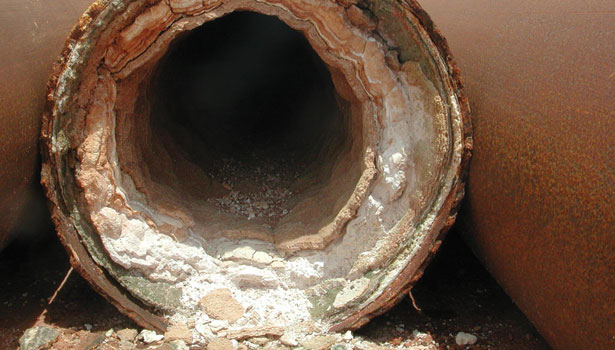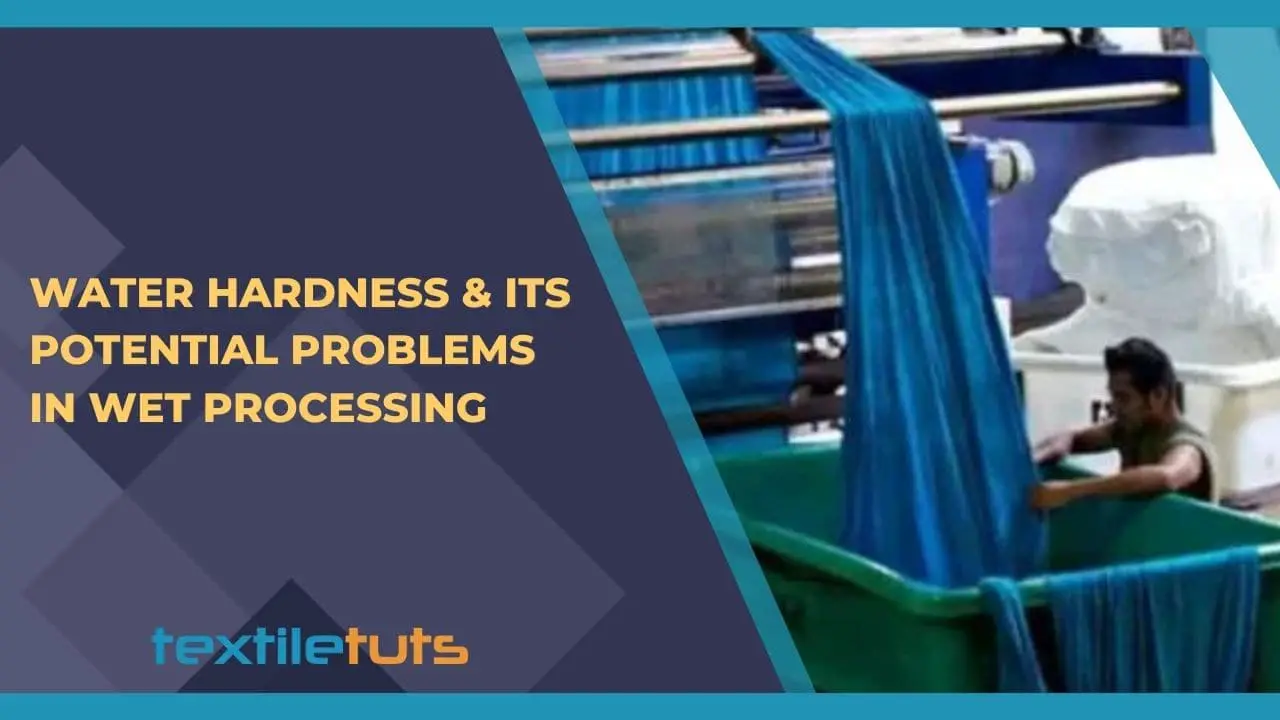Water Hardness & Its Potential Problems in Wet Processing
Water Hardness is a measure of the quantity of divalent ions (salts with two positive charges) such as calcium, magnesium present in water i.e. bi-carbonates, sulphates, chlorides.
The water that contains these kinds of salts is called hard water.
Classification
- Temporary hardness
- Permanent hardness
Temporary Hardness
this hardness is caused due to the presence of bi-carbonates of calcium and magnesium. Since this hardness can be removed easily by boiling the water, is called temporary hardness. When boiled, carbonates decomposes and liberates carbon-dioxide and forms an insoluble precipitate.
Permanent Hardness
The presence of chlorides or sulphates of calcium and magnesium cause permanent hardness. This hardness can not be removed easily by boiling. Ions causing permanent hardness of water can be removed using a water softener, or ion exchange column.
Methods of Expressing Hardness of Water
1. Parts Per Million(PPM)
The number of grains of calcium carbonates which is present in one million grains of water is called PPM.
2. Grains per Gallon(GPG)
The number of grains of calcium carbonates present in 70,000 grains of water.
PPM= GPG/0.07
Scales of Hardness
| Description | Definition |
|---|---|
| German hardness(odh) | 10mg CaO in 1L of water |
| French hardness(ofh) | 10mg CaCO3 in 1L of Water |
| English hardness(oeh) | 10mg CaCO3 in 0.7L of Water |
| American hardness(oah) | 1mg CaCO3 in 1L of water |
Hardness Unit Conversion
| Unit | PPM | GPG | odh | ofh | oeh |
|---|---|---|---|---|---|
| PPM | 1.00 | 17.12 | 17.85 | 10 | 14.25 |
| GPG | 0.05842 | 1.00 | 1.043 | 0.5842 | 0.8327 |
| odH | 0.5603 | 0.9591 | 1.00 | 0.5603 | 0.7986 |
| ofh | 0.1 | 1.712 | 1.785 | 1.00 | 1.425 |
| oeh | 0.07016 | 1.201 | 1.252 | 0.7016 | 1.00 |
Water Hardness Parameter/Classification of Water According to Hardness
| Classification | Hardness in PPM | Hardness in odh |
|---|---|---|
| Soft | >60 | 0-10.7 |
| Moderately hard | 60-120 | 10.8-21.4 |
| Hard | 120-180 | 21.5-32.1 |
| Very hard | <180 | ≥10.57 |
Problem with Hard Water
Hard water may cause a number of problems during textile processing . since every state of textile processing is interrelated with each other any problem caused by hard water in one stage might affect the sub sequent processes.
In Boiler

When hard water is boiled in boiler, temporary hardness causing element is dissociated and CaCO3 and Mg(OH)2 are formed . When they combine, create a stone like very hard insoluble material that is stored at the inner side of vessel or inner surface of tube. This material creates a layer progressively that is called ‘Scale’.
Ca(HCO3)2 → CaCO3 + CO2 ↑+ H2O
Mg(HCO3)2→ MgCO3 + CO2↑ +H2O
MgCO3 + H2O → Mg(OH)2 + CO2↑
[CaCO3 + Mg(OH)2] → Scale
This scale resist heat transfer and affects the free flow of water in tube. As a result more heat is required ,therefore, more fuel will be needed. When scale is present in the boiler equal transformation of heat can not be achieved in the tubes so that over heating in a particular portion of the tube may cause burst in the tube.
Corrosion can be a serious problem in boiler, if hard water is used in it. Dissolved O2 in the presence of CO2 is the common cause of corrosion. Fe present in hard water reacts with CO2 to form Fe CO3, which is the main process of corrosion. This Fe CO3 is hydrolyzed & produce Fe(OH)2, this agent / component damage the boiler.
Fe + H2O+ CO2 → Fe CO3 + H2O
FeCO3 + H2O → Fe(OH)2 + CO2
Potential Problem Caused by Hard Water in Textile Wet Processing
Desizing
Hard water de-active enzymes used in desizing process & insolubilize size materials such as starch, PVA, etc.
Scouring
Soap is used in scouring process. Soap is the Na & K salt of higher fatty acid (C17H35COONa). The Ca & Mg salt of hard water react with soap and produce organic salts they are insoluble. As a result, an amount of soap is wasted that are of no use.
CaSO4 + 2 RCOONa → (RCOO)2Ca + Na2SO4
MgSO4 + 2 RCOONa → (RCOO)2Ca + Na2SO4
Bleaching
Decomposes bleach bath.
H2O2→ H2O + [O]
Mercerizing
It forms insoluble metal acid, reduce absorbency and luster.
Dyeing
Ca2+ and Mg2+ ions of hard water reacting with dyestuff precipitates dyes. As a result a lot of dyestuffs may be wasted also uneven shade may appear.
Printing
It break the emulsion, change it’s thickness and efficiency and it is also harmful for thickener. It causes difficulty achieving required viscosity using thickener. Viscosity of printing paste since the prime concern of printing, hard water harms printing accuracy and production efficiency.
Finishing
Hard water interfering with catalysts, cause resins and other additives to become non reactive, break emulsion and deactivates soap.

